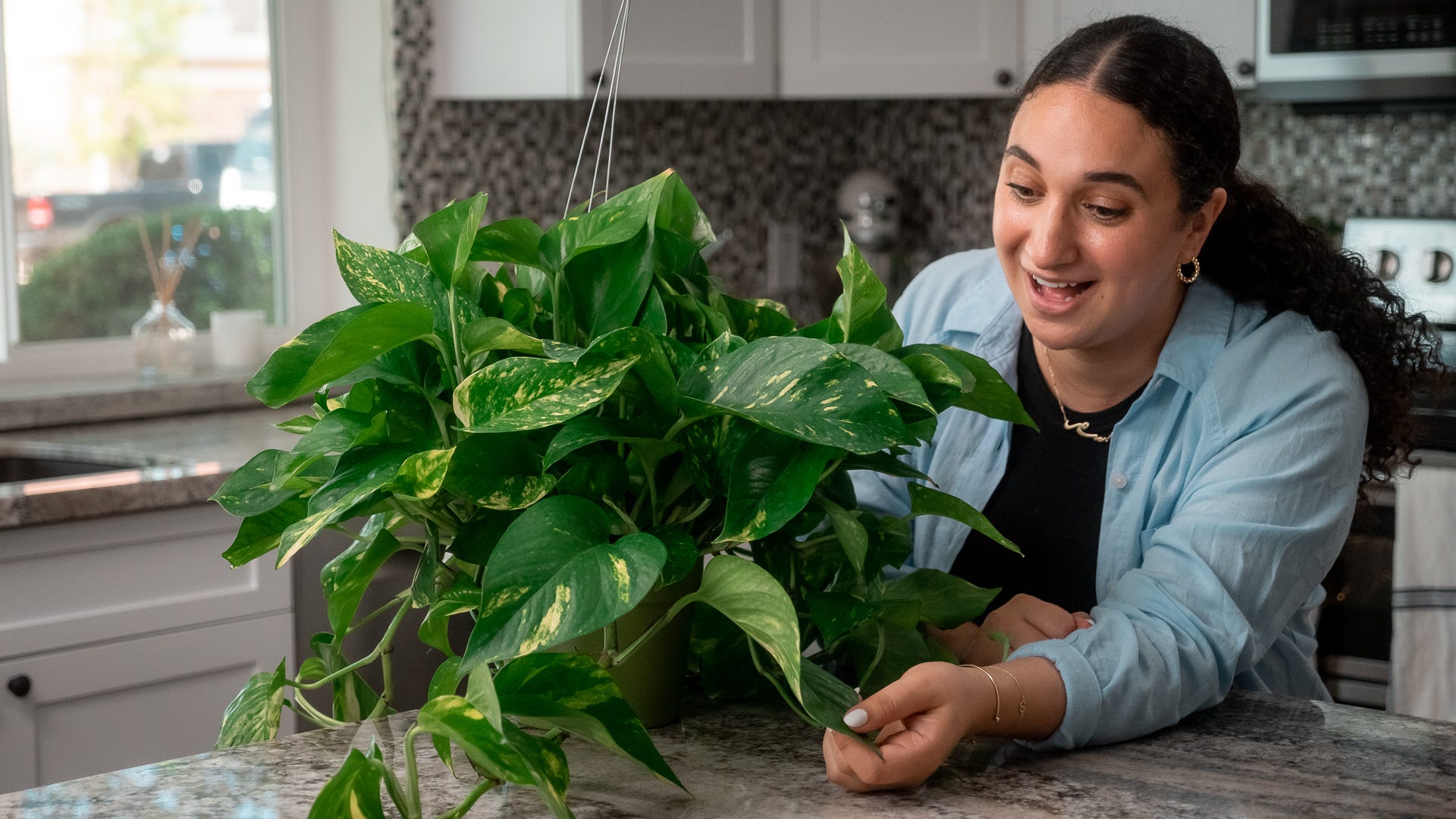Garden: Here's what to know about plant life cycles

- Plants are classified as annuals, biennials or perennials based on their life cycles.
- Biennials, like foxglove, have a vegetative year followed by a flowering year.
- Perennials, including woody shrubs and herbaceous plants, regrow each year.
Whenever I wander around garden centers, I try to listen to what shoppers are saying as they select plants to take home. I learn a lot when listening to comments from gardeners about which plants they prefer and which plants haven’t thrived for them in the past.
Recently, I overheard a couple discussing whether a plant they were looking at was an annual or a perennial and it occurred to me that the subject might be worth a review, especially for novice gardeners.
Plants are classified by the number of growing seasons it takes to complete their life cycles. Plants are classified as annuals, perennials or biennials.
Annuals typically bloom continuously throughout the growing season. Biennial plants bloom during their second year of growth and perennial plants bloom for anywhere from a week to two months each year.
Bloom time for perennials differs by species with some plants blooming in early spring and other perennials blooming much later in the growing season.
Annual plants
Annual plants are those which complete their full life cycles in one season. Most annuals are planted in spring, bloom in the summer and die in the fall. The most common flowering plants favored by gardeners in many areas are annuals.
Popular annuals include geranium, marigold, impatiens, begonia, petunia and many others. It is interesting to note that many of these plants grown as annuals in climates similar to Ohio's are grown as perennials in warmer locations in the United States.
The backyard of my son and daughter-in-law’s home in Davis, California, contains a geranium the size of a large shrub!
Except for a few annual plants which reseed themselves, annuals will not grow a second year. Some annuals more easily reseed themselves than others. Snapdragons are an example of an annual plant which routinely reseeds itself, sometimes fooling the gardener into thinking that the plant is actually a perennial.
Some annual plants are also hardy and can survive mild winters and regrow in spring. I once had a patch of snapdragons planted under the dryer vent, and mild winter weather and the heat supplied by the dryer vent allowed these annual plants to thrive year-round for several years.
Biennial plants
Biennial plants take twice as long to complete a full life cycle as annual plants. These plants require a dormant period induced by cold temperatures between vegetative growth and flowering.
Biennial plants typically are planted in spring and grow vegetatively during the first summer. These plants then go dormant in the fall and winter and grow vegetatively again the second spring, flower and set seed in the second summer of growth and then die in the fall.
Common foxglove (Digitalis purpurea) is an example of an herbaceous biennial plant. In its first year of growth, foxglove produces just a small rosette of green leaves. Only in its second year of growth does foxglove produce a tall spike containing showy blooms. Other flowering biennial plants include sweet William, hollyhock and forget-me-not.
Perennial plants
Perennial plants are those plants which survive cold winter temperatures and regrow each year. Perennials can be either woody or herbaceous. Woody perennial plants include many shrubs and trees in the landscape.
The top growth of woody perennial plants does not die back in winter. Some woody perennials are deciduous, meaning that they lose their leaves in the fall, but the stems and branches do not die in winter.
Herbaceous perennial plants are those which survive cold winter temperatures and regrow each year. The top growth of herbaceous perennial plants dies back to the ground during the winter, but the roots and crowns remain alive.
Herbaceous perennials provide foliage and flowers year after year without the need to replant each year. While some gardeners like to maintain planting beds containing only herbaceous perennials, I like to intersperse some small woody perennials, such as red twig dogwood, and annuals, such as impatiens and coleus, into my perennial beds.
Herbaceous perennial plants flower at different times during the growing season, so planting a variety of perennials which flower at different times during the growing season will result in a continuous show of flowers from early spring into the fall.
Herbaceous perennials which flower in early spring include coral bells, columbine, phlox and showy lupines. Perennials such as coneflower, black-eyed Susans, bee balm and milkweed tend to bloom during the dog days of summer.
For autumn color, choose herbaceous perennials such as New England aster, goldenrod and perennial sedums. And for some winter flowers, don’t forget to plant some hellebores or lenten rose.
Mike Hogan is Extension Educator, Agriculture and Natural Resources and associate professor with Ohio State University Extension.
hogan.1@osu.edu